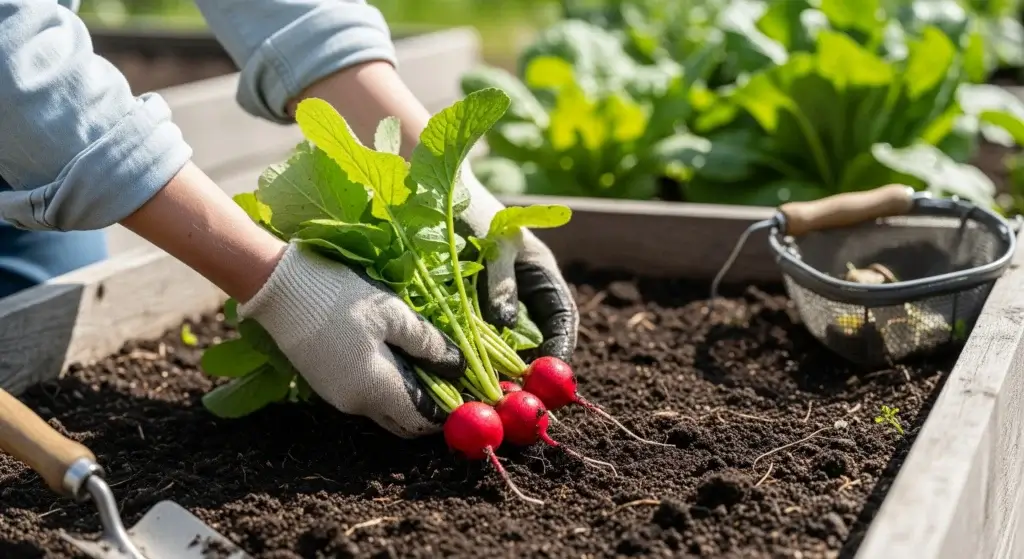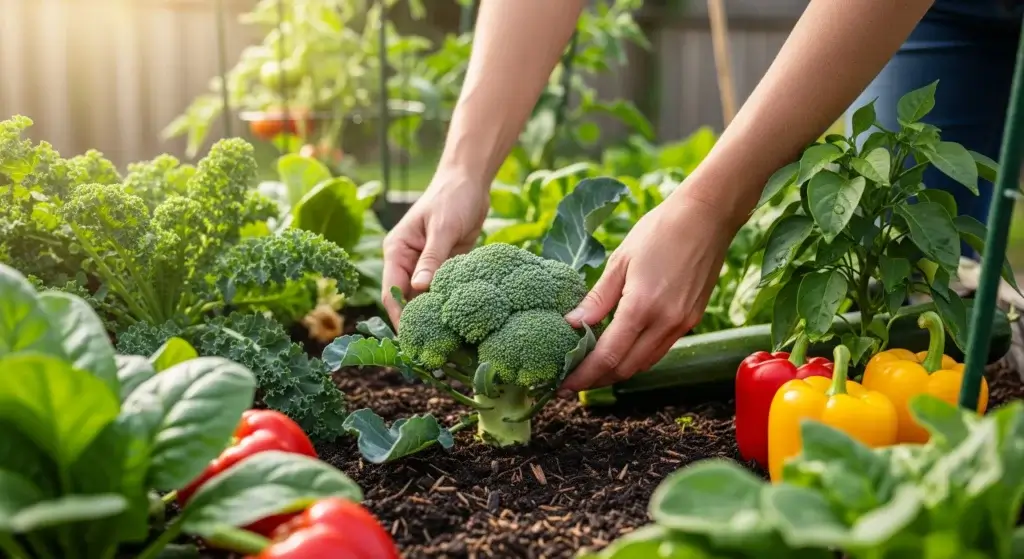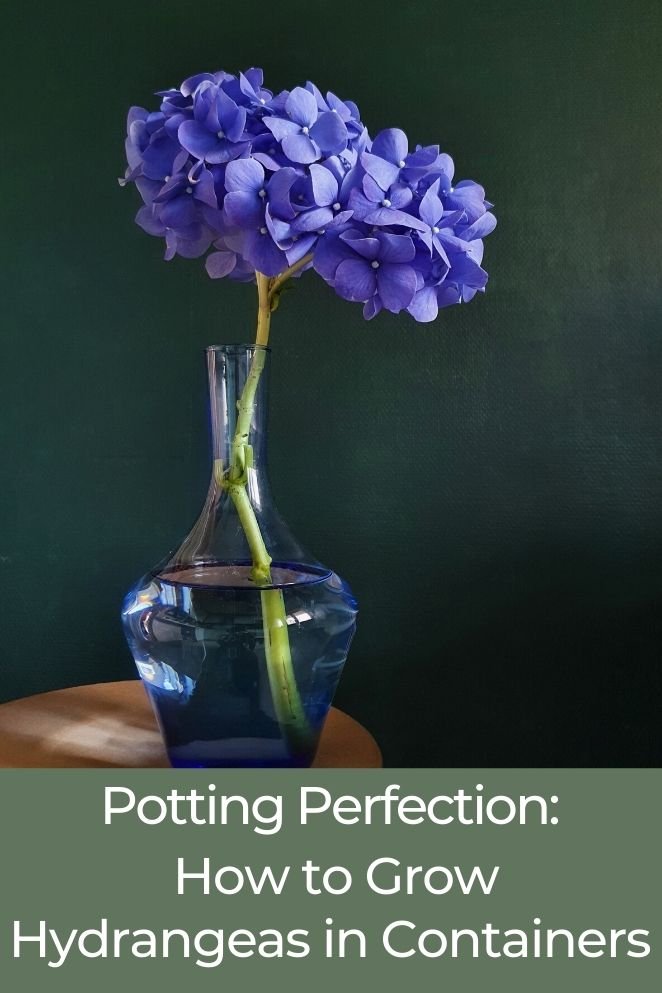
Hydrangeas are beloved for their vibrant blooms and are a beautiful addition to any garden.
However, if you have limited space or want to add a pop of color to your patio, growing hydrangeas in pots is a fantastic option.
In this comprehensive guide, we will explore everything you need to know about growing hydrangeas in pots, from choosing the right pot and potting mix to step-by-step planting instructions, fertilizing, and maintenance tips.
How to Choose the Right Pot and Potting Mix
When it comes to growing hydrangeas in pots, selecting the right pot and potting mix is crucial for the health and vitality of your plants.
Here are some expert tips to help you make the best choices:
- Read also: How To Propagate Spider Plant In Water
- Read also: A Guide on How To Grow Cypress Trees
Potting mix
General-purpose mix
Opt for a loam-based potting mix as a versatile choice for hydrangeas.
These mixes offer a balanced blend of organic matter, sand, and silt, providing a suitable environment for root development.
pH considerations
Hydrangeas are adaptable to various pH levels, but for blue-flowered varieties, it’s advisable to use ericaceous compost.
This specialized mix helps maintain the acidic conditions that enhance the vibrant blue coloration of the blooms.
Pot selection
Drainage holes
Choose a pot with drainage holes at the base to facilitate the efficient drainage of excess water.
Proper drainage is crucial in preventing waterlogged soil, which can lead to root rot and other issues.
Sturdiness
Ensure that the selected container is robust and heavy enough to provide stability for your hydrangea.
This is especially important to prevent toppling, particularly in windy conditions or when the plant is in full bloom.
Pot size
Width and depth
Select a pot with a diameter ranging from 16 to 24 inches to provide ample space for the hydrangea’s roots to spread and grow.
A deeper pot allows for sufficient soil volume, promoting healthy root development and overall plant vitality.
Consider plant size
Tailor the pot size to the specific hydrangea variety.
Compact hydrangea types are well-suited for smaller pots, while larger varieties necessitate extra-large containers to accommodate their size and root system.

Step-by-Step Instructions on Planting Hydrangeas in Pots
Planting hydrangeas in pots is a rewarding endeavor, offering flexibility and beauty to your outdoor or indoor space.
Follow these simple steps for successful planting:
Choose the right pot size
Select a pot that provides ample space for the hydrangea’s roots to spread and grow.
Opt for a container with a diameter ranging from 16 to 24 inches and sufficient depth to accommodate the plant’s root system.
Choosing the right pot size ensures optimal growth and prevents overcrowding.
Planting process
Prepare the pot
Place the hydrangea, still in its original pot, into your chosen container.
As you fill the soil around it, ensure to firm the soil gently to provide stability.
Positioning
Place the hydrangea at the same depth as it was in its original container.
This consistency in planting depth supports the plant’s establishment and reduces stress during the transition.
Soil considerations
Use a well-balanced potting mix to provide essential nutrients and promote proper drainage.
The soil should be loose enough for root penetration but firm enough to provide stability for the plant.
Watering and maintenance
Regular watering
Hydrangeas in pots have specific watering needs.
Ensure consistent moisture, especially during hot, dry periods.
Avoid waterlogging, as it can lead to root issues.
Monitor the soil moisture regularly and adjust your watering schedule accordingly.
Fertilization
Provide a balanced, slow-release fertilizer to nourish the hydrangea.
This supports healthy growth and encourages abundant blooms.
Follow the recommended application rates and schedule based on the specific fertilizer product.
Sunlight requirements
Place the potted hydrangea in a location with the appropriate sunlight conditions.
Most hydrangea varieties thrive in partial shade, receiving morning sun and afternoon shade.
However, specific varieties may have unique sunlight preferences, so it’s beneficial to know the requirements of your particular hydrangea.
Pruning and deadheading
Prune dead or damaged stems and spent flowers regularly to encourage new growth and prolong blooming.
Deadheading redirects energy to healthy parts of the plant, ensuring continuous vibrancy.
Winter protection
If you live in a region with harsh winters, consider protecting your potted hydrangea by insulating the container with materials like burlap or moving it to a sheltered location.
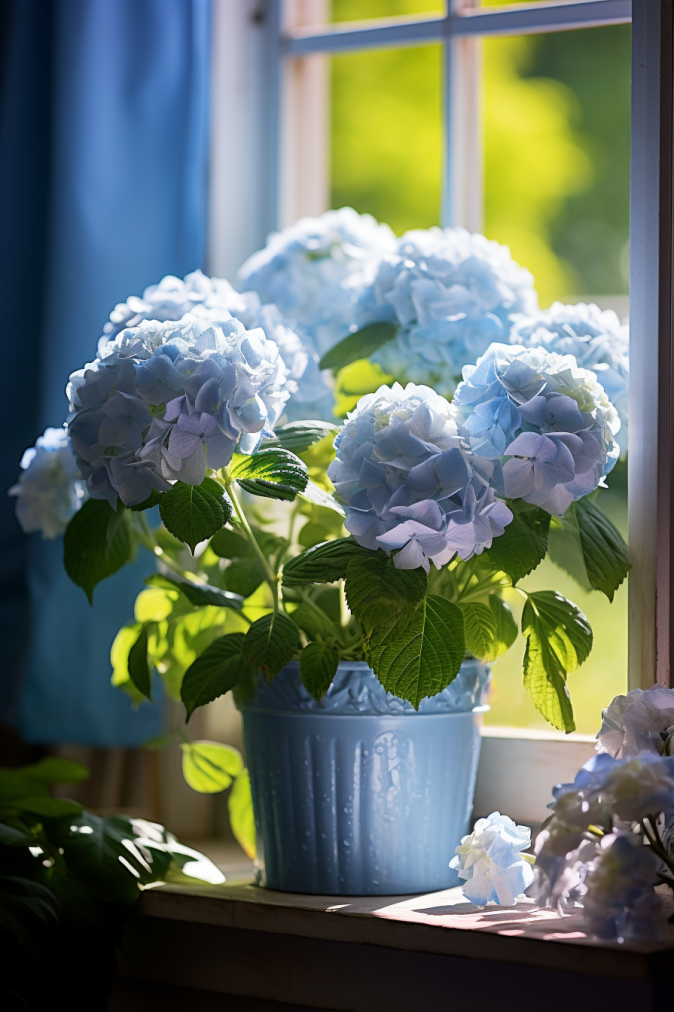
Fertilizing and Maintenance Tips
To ensure your potted hydrangeas thrive, it’s important to provide the right fertilization and maintenance.
Use an all-purpose flowering shrub formula or a rose fertilizer to support the plant’s growth and blooming.
Additionally, consider using self-watering pots or a drip irrigation system to make watering more manageable and ensure your hydrangeas receive the consistent moisture they need for healthy growth.
Pests And Diseases That Affect Hydrangeas in Pots
Common pests and diseases that affect hydrangeas in pots include:
Pests
- Scale: Identified by clusters of white eggs on stems. Treat with Insect Control.
- Slugs: They attack young hydrangeas, causing holes with ragged edges in leaves. Use slug traps and handpick them off.
- Aphids: Small black or green bugs on leaves. Treat by gently spraying leaves with a hose or using Insect Control.
- Beetles: Japanese Rose chafers are known for eating petals and leaves. Handpick beetles and drop them in soapy water or spray with Insect Control.
Diseases
- Powdery mildew: Causes a gray, powdery coating on foliage. Remove and destroy affected plant parts. Apply Neem Oil 3n1 as needed.
- Rust: Needs two hosts to survive and does not kill either of them. Treat by applying a fungicide as soon as the disease is discovered.
- Botrytis: Causes blighting of the young leaves and flowers. Prune and remove infected parts of plants and apply fungicidal treatment as required.
- Cercospora leaf spot: Causes tan spots on leaves. Treatment consists of removing all diseased foliage promptly and cleaning up thoroughly in the fall. Apply a fungicide that is labeled to treat the disease if the problem persists.
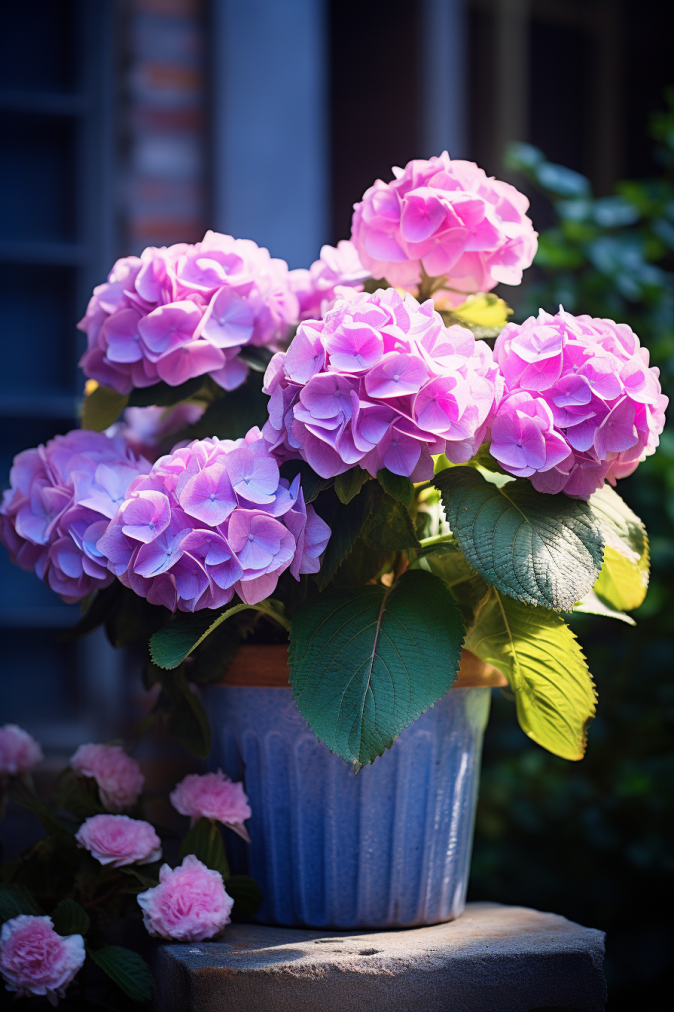
Conclusion
Cultivating hydrangeas in pots offers a delightful means to relish the splendor of these captivating plants within limited spaces.
This comprehensive guide presents expert recommendations for selecting suitable pots and potting mixes, planting hydrangeas securely, and ensuring optimal fertilization and upkeep to foster robust, vibrant blooms.
With the guidance provided herein, you can confidently embark on your journey to nurturing flourishing hydrangeas in containers, enhancing your surroundings with their beauty and charm.
- Read also: A Guide to Growing Croton Mammy
- Read also: A Guide to Growing Cordyline Red Sister Plants
FAQs
Hydrangeas can grow successfully in pots, and the size they can reach will depend on the specific variety. Compact varieties are well-suited for pots, while larger forms may require extra-large containers.
The best time to plant hydrangeas in pots is in spring and fall, providing the plants with favorable conditions for establishment and healthy growth.
Potted hydrangeas require regular watering, especially during warm, dry weather. It’s important to keep the soil consistently moist, but not waterlogged, to support healthy growth and blooming.

